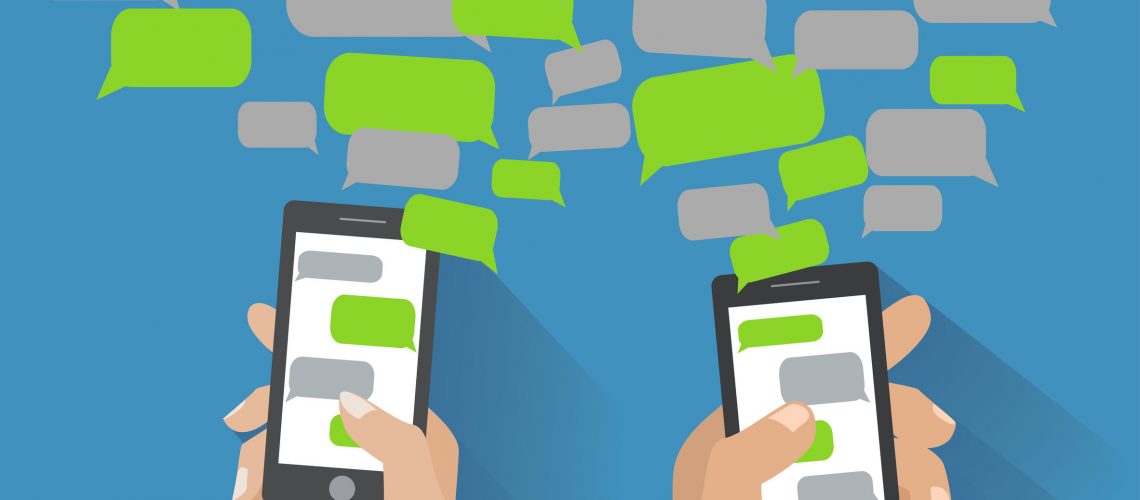It’s no secret that today’s generation of consumers is much different than 20 years ago (and even 10 years ago). Regardless of what we’re buying or who we’re engaging with, we want communication to be as quick and easy as possible—and preferably from our mobile devices.
Understanding SMS Marketing
One tactic that has performed exceptionally well across a variety of industries is short message service (SMS) marketing, also known as text message marketing. How well has it performed? Here are some stats from VoiceSage to show you:
- 90% of SMS messages are read in the first 3 minutes
- 82% of people say they open every text message they receive
- 19% of links in text messages are clicked
- 70% of customers say SMS is good for businesses to get their attention
- 59% of users want their communications function built into the phone, not as a separate app
- 45% is the average response rate for SMS
Many businesses overlook SMS as a platform of communication. But the truth is, many consumers don’t want to log into an app, sift through their emails or go to a website to get the content they want. And SMS marketing is a great convenient option to resolve it.
How SMS Marketing Can Work for the Medical Arena
Many medical practices are already utilizing this convenient platform for scheduling appointments and sending appointment reminders, sending patient-satisfaction surveys, offering promotions or health tips, sending reminders for preventative care, and more.
When Texting Patients Becomes Problematic
Convenient as it may be for sending reminders, promotions and surveys, texting patients can also become an expectation for all areas of their experience with your practice—extending to communication from (and to) their physician.
Imagine this scenario: A patient comes into a dermatologist’s office with a case of contact dermatitis. The dermatologist prescribes a medication for the patient to use throughout the next week. The patient then informs the physician that they will be vacationing during that time and asks to have the physician’s personal cellphone number in order to send photos for the physician to monitor the condition.
When patients are prompted with texts from the practice for other aspects of their visit (scheduling, reminders, etc.), it’s understandable that they assume the same communication can be done directly between patient and physician.
However, there are some problems with this assumption. First, there’s HIPAA. Under the HIPAA Security Rule, physicians and other entities covered by HIPAA must conduct a risk assessment to determine how the privacy and security of protected health information (PHI) could be compromised when it is communicated electronically.
Secondly, most physicians (regardless of specialty) are just plain busy throughout the day seeing other patients.
Trusted SMS Options for Your Practice
So if patients expect (or just prefer) texting as a method of communication with their physicians, what can be done to provide a good compromise? One of the most manageable options is to hire a HIPAA-compliant patient-communication platform that works well for your practice.
If you’re interested, here are a few options to look into:
OhMD
OhMD is a widely used platform that offers HIPAA-compliant two-way messaging, live web chats, file delivery, reminders, broadcasts and more. It helps with streamlining patient follow-ups, addressing health concerns and scheduling future visits, as well as securely sending photos and links with sensitive patient information. It also prevents physicians from feeling like they need to give out cellphone numbers or reply to messages after hours—OhMD allows for automated messages to be sent directly via text. No need for patients to download an app, sift through emails or dig up a buried voicemail to find important information from their physician.
DocsInk Messenger
Another option is DocsInk—another top choice for HIPAA-compliant secure messaging, used by thousands of healthcare professionals every day. DocsInk Messenger offers consult requests with accept/decline options, broadcast messaging, a rapid-response page feature, video chat and conferencing, secure document sharing within a compliant cloud, public and private group tags, user-based privileges, and other helpful features to facilitate day-to-day internal and patient communication. This tool works well with surgical facilities, hospitals, primary care clinics, home health companies, multi-specialty clinics, and more.
TigerConnect
TigerConnect is another option for centralized data and communications on a single platform. It’s mobile-friendly with 99.99% uptime and real-time patient data. And with annual audits from the HITRUST Alliance to ensure the highest standards of security, patients and providers can rest assured sensitive data is kept completely safe. The TigerTouch® feature provides an easy, secure way to communicate with patients, family members and primary care physicians, with the ability to exchange care instructions, photos, videos and other important medical documents.
——————————————————
Photo courtesy of: NCG Medical
Originally Published On: NCG Medical
Follow Medical Coding Pro on Twitter: www.Twitter.com/CodingPro1
Like Us On Facebook: www.Facebook.com/MedicalCodingPro







